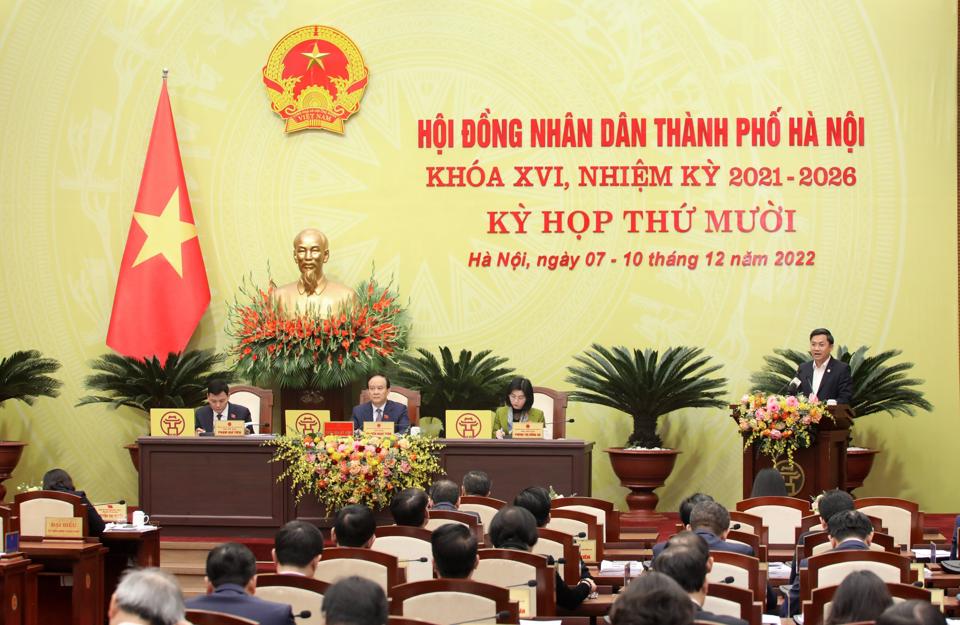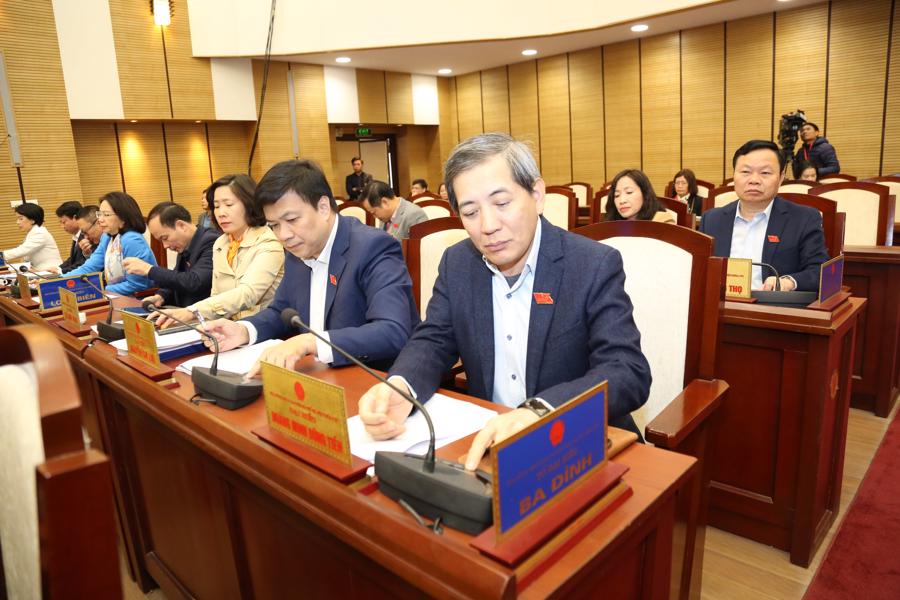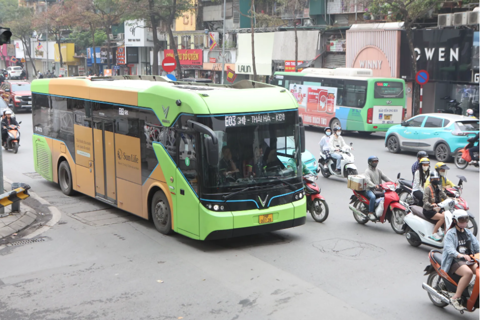Hanoi eyes GRDP growth of 7% for 2023
Hanoi will continue economic restructuring efforts, promote new growth drivers, and strengthen its self-reliance and resilience to external shocks.
Hanoi's regional gross domestic product (GDP) is projected to grow by 7% by 2023, above the country's target of 6.5%.
| Overview of the session. Photos: Thanh Hai |
Vice Chairman of the Hanoi People's Committee Ha Minh Hai made this forecast today [December 8] at the 10th session of the municipal People's Council.
According to Hai, such a prediction is based on anticipation of the complicated global situation and the country’s GDP forecast at 6.5%.
“Out of the three scenarios, the 7% growth target – a 1.08-fold higher than the national average- is deemed suitable to the situation,” Hai said.
Faced with growing concern from businesses, especially the lack of access to working capital, Hai said Hanoi would continue to create policies to support economic activities while closely monitoring the global and domestic situation to ensure the job security of the local population, especially in rural areas and industrial parks.
In addition, Hai said Hanoi would promote craft village development and expand the investment in craft village industrial clusters, move production activities out of residential areas, and create a favorable legal environment to attract capital into industrial parks.
Hai expects Hanoi to develop transport infrastructure next year, especially projects to boost inter-provincial connections and ring roads to create new growth spaces, along with economic production facilities of industrial parks, shopping malls, hotels, and financial service centers.
Hai shared with deputies that the city's rapid and sustainable development should be based on high technologies, innovation, and digitalization, forming three pillars: digital government, society, and economy.
As part of efforts to improve the efficiency of the local apparatus, Hai stressed the need for Hanoi to continue promoting administrative reform and decentralization.
"Hanoi will continue to apply IT and digitalization, starting with the reporting system and a shared city database for greater transparency," he said.
| Deputies vote on the resolution. |
Approving 22 socio-economic targets for 2023 On the same day, the Hanoi People's Council passed a resolution for socio-economic development in 2023, including 22 key indicators, with the support of 100% of the deputies present. The overall objective of the resolution is to stabilize macro fundamentals, contain inflation, and boost growth. Among the specific targets, the city expects the GRDP to expand by 7% in 2023, a GRDP per capita of VND150 million (US$6,294), an export growth rate of 6%, and a consumer price index (CPI) expansion rate below 4.5%. Hanoi will continue economic restructuring, promote new growth drivers, and strengthen its self-reliance and resilience to external shocks. Comprehensive development of culture, education, containment of future diseases, and ensuring social welfare is also at the top agenda of the city. Hanoi is expected to apply technologies in state governance toward the formation of digital Government; improve the city’s performance in the Provincial Competitiveness Index (PCI), the Public Administrative Reform Index (PAR), the Provincial Governance and Public Administration Performance Index (PAPI), and the Index of Public Administration Services (SIPAS). Throughout such efforts, Hanoi is expected to step up the fight against corruption and waste to gain public trust. The resolution called for the city to prioritize the development of digital infrastructure, science/technology, innovation, and startups; tightening the management of land and natural resources, environmental protection, and climate change response; speeding up the planning process, and streamlining the local apparatus. |












